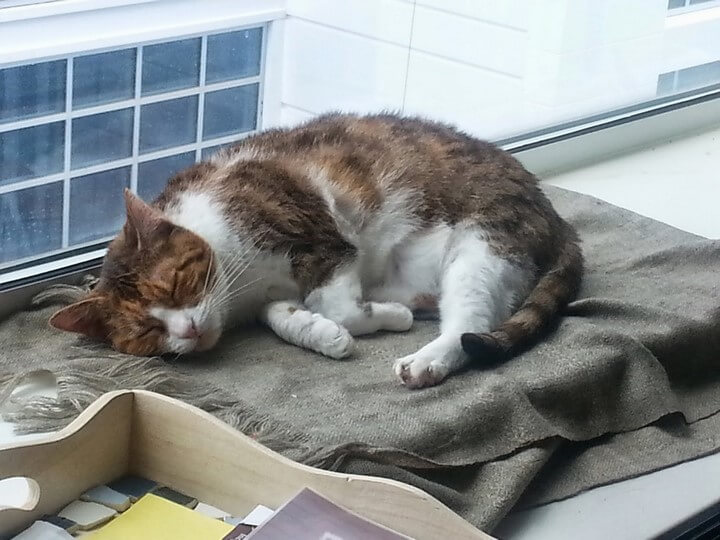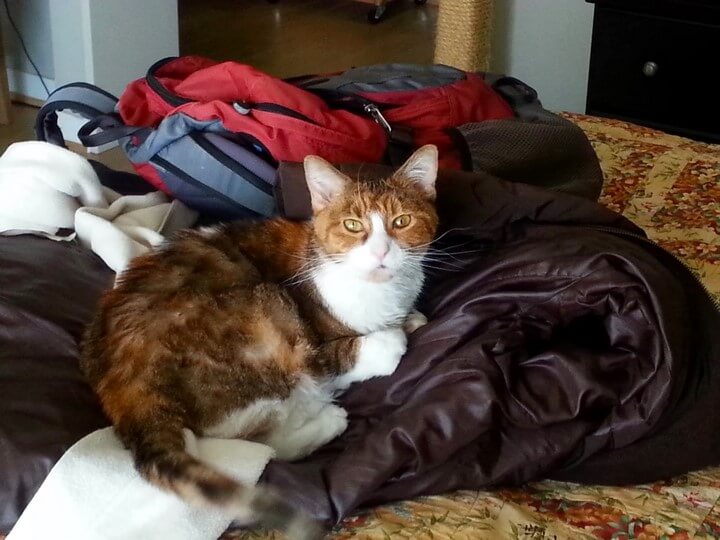Izzy is an 8-year-old kitty who came to see me because her
owner noticed over the past month she had been drinking and urinating much more
than normal. Overall she is a healthy, middle-aged cat with no previous medical
issues. Her physical exam was unremarkable but she had lost a little over half
a pound since her visit last year.
Additionally, a few months ago she had been given an injection of a
steroid by a veterinarian at another hospital to help with a superficial skin
infection.
There are many causes of increased thirst and urination, a
condition technically called polydyspia and polyuria. We submitted blood and
urine to look for underlying causes such as chronic kidney disease or a urinary
tract infection. Izzy’s results
came back showing she had a significantly elevated blood glucose level and
glucose in her urine. These two concurrent results are diagnostic for diabetes
mellitus. Other signs of diabetes
in cats other than increased thirst and urination are weight loss, changes in
liver function and hind limb weakness.
Diabetes in cats is similar to Type 2 diabetes in humans.
The pancreas does not produce enough insulin in response to a meal resulting in
elevated blood glucose levels. In addition, the insulin that is produced is not
utilized correctly to process blood sugar. The major cause of diabetes in cats is obesity, which is
made worse by inactivity and excessive dietary carbohydrates. In Izzy’s case she is not overweight
but the steroid injection could have affected her ability to produce insulin
resulting in diabetes. It is
unusual and unfortunate that she developed diabetes after just one steroid
injection.
Once we had a diagnosis of diabetes, we needed to start Izzy
on twice daily insulin injections and adjust her diet. After she had been on
insulin for a week we performed a blood glucose curve to assess how she was
responding to treatment. This means her owner checked her blood glucose with a
machine called a glucometer, every four hours for a twelve-hour time span. Izzy’s owner is amazing, she tackled
both the daily and injections and at home curves with ease.
We started Izzy on insulin and planned the first curve a
week later. This would give her
body time to get used to the insulin and start balancing out her blood
sugar. Her first curve showed that
the insulin barely changed her blood sugar at all so we gave just a touch
more. We have to be careful not to
give too much insulin as this can cause her blood sugar to go to low
(hypoglycemia) resulting in neurologic issues such as vomiting, decreased
appetite, weakness, stumbling and seizures. It took us about six weeks to get it right, after each blood
glucose curve we would gradually increase the insulin and check a curve a week
later.
Izzy is now a well-regulated diabetic, happily eating Hill’s
Prescription M/D diet. It is
important to implement a diet change to help better manage diabetes in cats. Unlike
people and dogs, cats are obligate carnivores. This affects how they process
nutrients in many ways, one of which is that they are not well equipped to metabolize
an excess of dietary carbohydrates. The M/D diet is high in protein and low in
carbohydrates, specifically designed for diabetic kitties to help better
regulate their blood sugar.
Diabetes is a difficult disease for pet owners, it is
expensive to treat and requires a unique dedication to your pet. Cats have a finicky pancreas and can
develop complications from their diabetes without warning. Owners like Izzy’s mom deserve recognition
for all their hard work and devotion to their pet’s health.










No comments:
Post a Comment